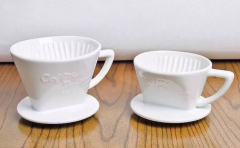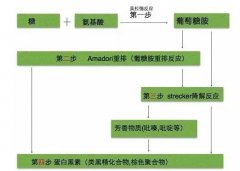Sumatran Coffee in the World of Fine Coffee
Follow the caf é (Wechat official account vdailycom) and found that Beautiful Cafe opened a small shop of its own.
Summer energy blooms 🐯 a coffee tiger
It turns out that you are such a Sumatran tiger:
1. Who is Sumatra?
Located in the west of Indonesia, Sumatra is the sixth largest island in the world and the second largest island in Indonesia. Sumatra is located in the tropical rain forest climate, year-round high temperature and rainy, abundant rainfall, many rivers, tropical rain forest is very dense. Due to the small annual variation of solar radiation, the temperature difference is not large, generally no more than 5 °C.

two。 Sumatran Coffee in the World of Fine Coffee
In the world of boutique coffee, Sumatran coffee is produced in North Sumatra (keywords: Lake dopa, Lindong, Mandaining, Bhatta Coffee, Manning Coffee, Golden Manning), and Aceh Special District (keywords: Lake Tawa, Gaiyou Mountain, Gaiyou nationality, Aceh Coffee, Gaiyou Manning, Takangong Manning), among which Lindong region has the highest quality and price. Manning Coffee is low sour, low sweet and high mellow. it is praised for its spicy taste and wild flavor. Soil, water and varieties are the main reasons for its special flavor, and the unique "wet planing method" of Sumatra has the greatest influence on its flavor. Coffee beans with both scientific cultivation and perfect handling are likely to show a mellow, low-acid, sweet Sumatran flavor; if any link is not properly controlled, the beans may produce a boring Sumatra or even mildew smell. As a result, high-quality Sumatran coffee beans are always available.
3. So, the question is: what is "wet planing"?
The emergence of wet planing is closely related to the local climate. The traditional three major treatment methods have high requirements for sunshine conditions, but Sumatra has a humid climate. As a result, local coffee farmers adapted measures to local conditions and invented a unique wet planing method, which greatly shortened the drying time and the fermentation period of coffee beans, which greatly reduced the sour taste, but increased the thickness. Caramel and fruit aromas are obvious, with slightly woody and herbal flavors, which is the classic "regional flavor" of Sumatran coffee.
First. Peel the coffee fruit, soak in water and remove the floating beans.
After... After cleaning, dry body fermentation is done, that is, pectin sugar on the surface of the seed shell is fermented to enhance the flavor. The longer the fermentation time, the heavier the sour taste, and the fermentation time varies from person to person.
And then... When the shell beans are exposed to the sun for one or two days, the moisture content of the bean body is 30% 50%, and the bean body is still semi-hard and semi-soft.
Finally. After throwing the shell of the machine, the drying process is accelerated, and the moisture content reaches 12% Murray 13% in about two days, and the job is done. About four days before and after.
4. Sheep's foot bean
As the name suggests, beans with cracked tops that look like sheep's hooves are called sheep's hoofs (Oh, my God, I can't tell the hooves of cattle, sheep and deer, but they are cloven hooves anyway). There are many reasons for Bauhinia. High probability events include: a. The wet planing method touches the germination mechanism of raw beans. b. In the process of shell planing, friction produces heat, sprouting and mold growth. c. The beans are cracked like sheep's hooves when the mechanical force is damaged. However, it has not been decided whether the Bauhinia bean is good or bad.
5. The world's unique wet bean trade:
The trade in shell beans is found only in Sumatra. Because the production scale is too small to afford expensive advanced drying equipment, coffee farmers in Lake dopa and Aceh sell half-dried shelled beans to middlemen, who bring them back to continue the drying process. Semi-dried shelled beans are more likely to be infected with mold during transportation. But interestingly, different strains bring different flavors, creating the unique regional flavor of Aceh and Lake dopa.
Important Notice :
前街咖啡 FrontStreet Coffee has moved to new addredd:
FrontStreet Coffee Address: 315,Donghua East Road,GuangZhou
Tel:020 38364473
- Prev

Do you know all the diversion grooves in the coffee filter cup?
The sharing of coffee filter cups has also been introduced a lot, and many friends have asked me about my experience in how to select coffee filter cups. In fact, the choice of filter cups does not only depend on their appearance. Different structures and settings of the diversion tank will have different effects on the coffee drip filtration process, so today, with guidance on the direction of selecting the filter cup, let's talk about the right setting of this diversion tank.
- Next

Baking basic science, browning reaction non-enzymatic browning
Following Cafe Review (official Wechat account vdailycom) found that non-enzymatic browning of Beautiful Cafe opening a small shop of its own is different from enzymatic browning. Non-enzymatic browning reactions do not require enzymes, but their reactions require heat, sugars and amino acids. There are two non-enzymatic browning reactions related to coffee roasting: caramelization (caramelization recation) and Maillard reaction.
Related
- Beginners will see the "Coffee pull flower" guide!
- What is the difference between ice blog purified milk and ordinary milk coffee?
- Why is the Philippines the largest producer of crops in Liberia?
- For coffee extraction, should the fine powder be retained?
- How does extracted espresso fill pressed powder? How much strength does it take to press the powder?
- How to make jasmine cold extract coffee? Is the jasmine + latte good?
- Will this little toy really make the coffee taste better? How does Lily Drip affect coffee extraction?
- Will the action of slapping the filter cup also affect coffee extraction?
- What's the difference between powder-to-water ratio and powder-to-liquid ratio?
- What is the Ethiopian local species? What does it have to do with Heirloom native species?

